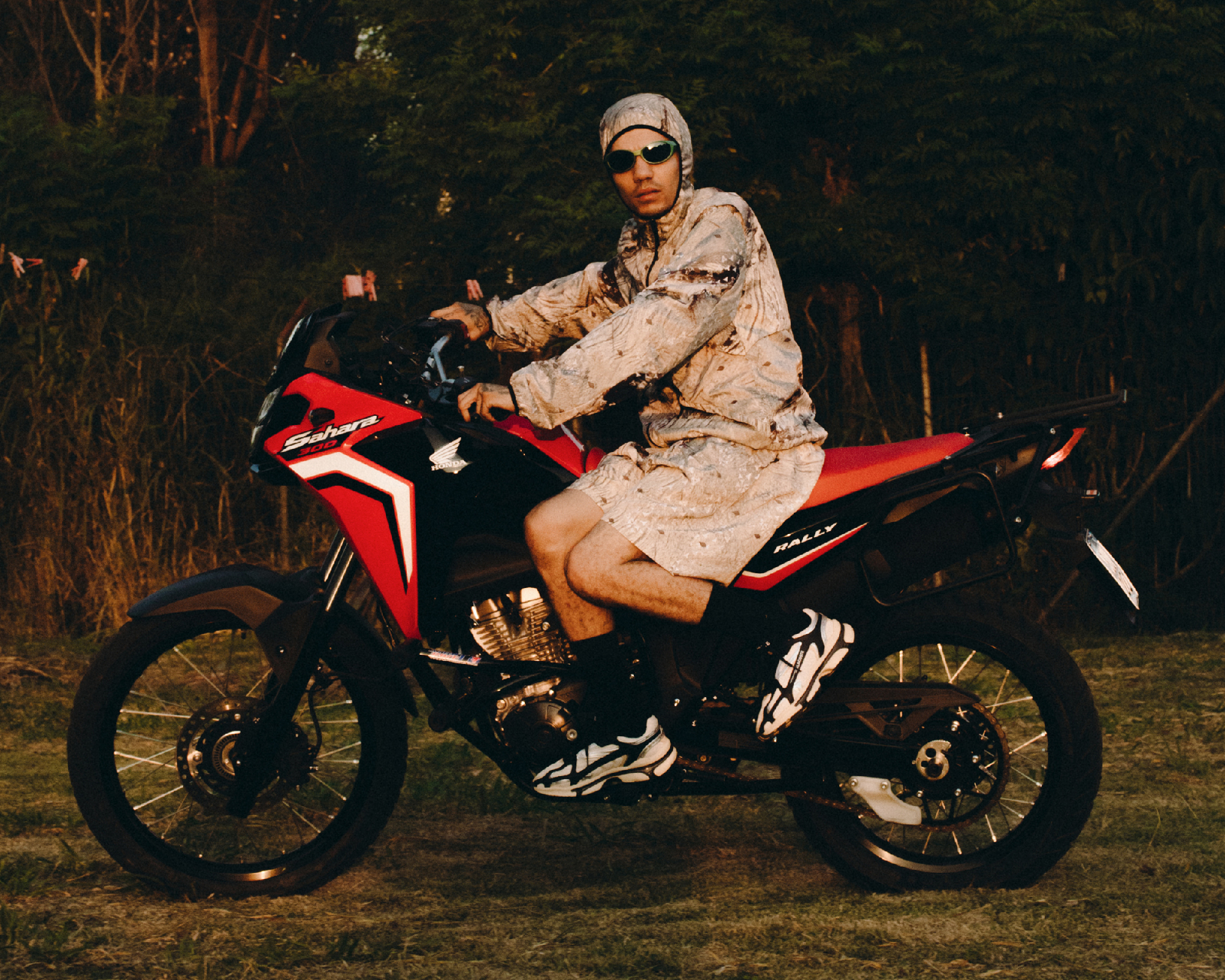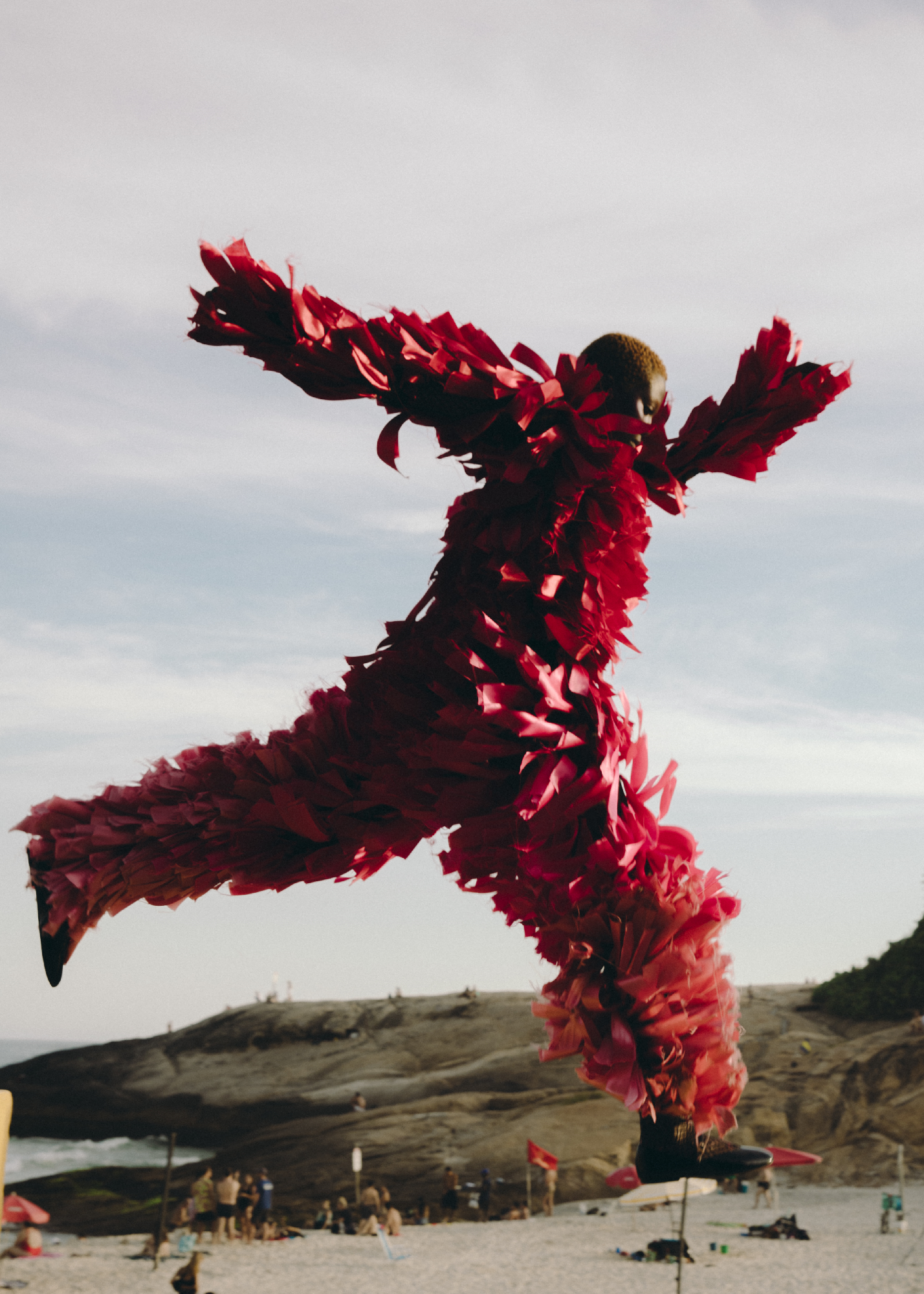The photographer celebrating the complexity and beauty of Brazil’s Black youth
Dubbed one of Latin America’s new wave fashion photographers by the Business of Fashion, Pedro Napolinário’s fantastical lens on Brazil has been sought after by the likes of Elle, Vogue and Harper’s Bazaar. Yet he tells us of his craft, “It wasn’t a goal I had from an early age, it was a path that developed naturally.” Born in the state of Rio de Janeiro, his family always encouraged his creativity and as a teenager, they gave him a semi-professional camera. This allowed him to pursue a self-taught path, creating stories on a limited budget inspired by the images he saw in lifestyle magazines.
Maturity, both personal and professional, brought him a greater understanding of the absence of Black bodies portrayed in photography, especially in moments of leisure and well-being. This motivated him to establish a collaborative studio in 2020 with a make-up artist and a stylist, where they built a new repertoire that soon got noticed by taste makers. Since then, his visual language has become more expressive, attracting clients such as Farm, Lacoste, Nike and Netflix, in addition to being recognised by the Dazed100 list and the Latin American Fashion Awards.
“The way I try to communicate my Brazil is very much from Rio’s suburbs and all the codes that permeate them"
For Napolinário, influences are both local and international. He remembers first discovering Africa’s post-independence photographers such as Seydou Keïta and Malick Sidibé, who he feels reflect the same spontaneity as their Brazilian peers like Walter Firmo and Luiz Braga. “In a manner, there is a magical realism in their photographs that works with the humanity of people. There are some images where you don’t know if they are documentary or directed photos.” He’s equally excited by Africa’s contemporary photography and its parallels with Brazil’s scene. “I like to research resources that we have here, which is similar to the way the Afro-diasporic movement works. A lot of local tools are used to create a powerful identity that still communicates globally.”
“When I put street cast models in a fashion context it can create a discomfort within the image that I find very beautiful"
As part of his process, Napolinário enjoys working with outskirt communities to decode Rio’s urban and popular symbols such as the figures of the bate-bolas (carnival dancers), the reflexo alinhado (a bleached hairstyle often favoured by Black boys) and new developments in youth culture. “I do a lot of street casting to put non-professional models in a fashion context. This creates a discomfort within the image that I find very beautiful, as well as nuances that make them more alive. The intention with which people interact with the camera is very human, from fear and shame to pride and high self-esteem.”
With growing interest in his work from the international market, he’s driven to continually question how to represent his country’s great diversity with ever-greater authenticity. “The way I try to communicate my Brazil is very much from Rio’s suburbs and all the codes that permeate them, from one neighbourhood to another,” he reflects. “I try to go back to the visual resources I had as a child. I remember being enchanted by the explosive expression of Carnival clothing. People gain volumes, colours and textures that they don’t usually carry throughout the year.”
This purpose often brings him in dialogue with stylist and creative director Rafaela Pinah of Coolhunter Favela. The two originally met on an unpublished book project and their professional bond soon grew. “We created these images together and the way Pinah gave them meaning was very enriching for me. The way she could sum up so much context in an image is very rare to find.” Both creatives also share a belief in representing new masculinities in the city's suburbs. “Nowadays, there are changing forms of male behaviour in these spaces. Male vanity, for instance, is much more accepted. It's not uncommon for a boy to get his nails, hair and eyebrows done almost every week. And there's a lot more talk about feelings.” It’s this sensitivity to personhood and to place that steeps Napolinário images in a deeply tender energy. One that boldly takes his Rio, and his Brazil, to the world.





